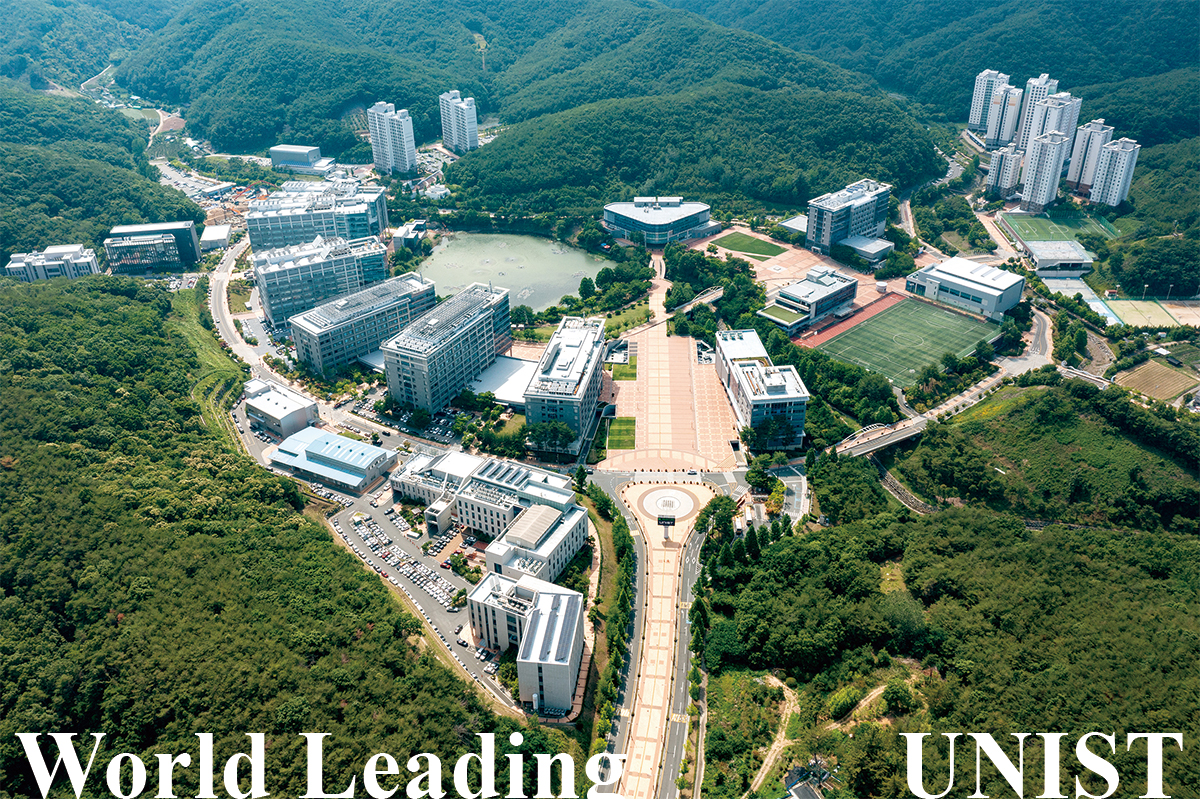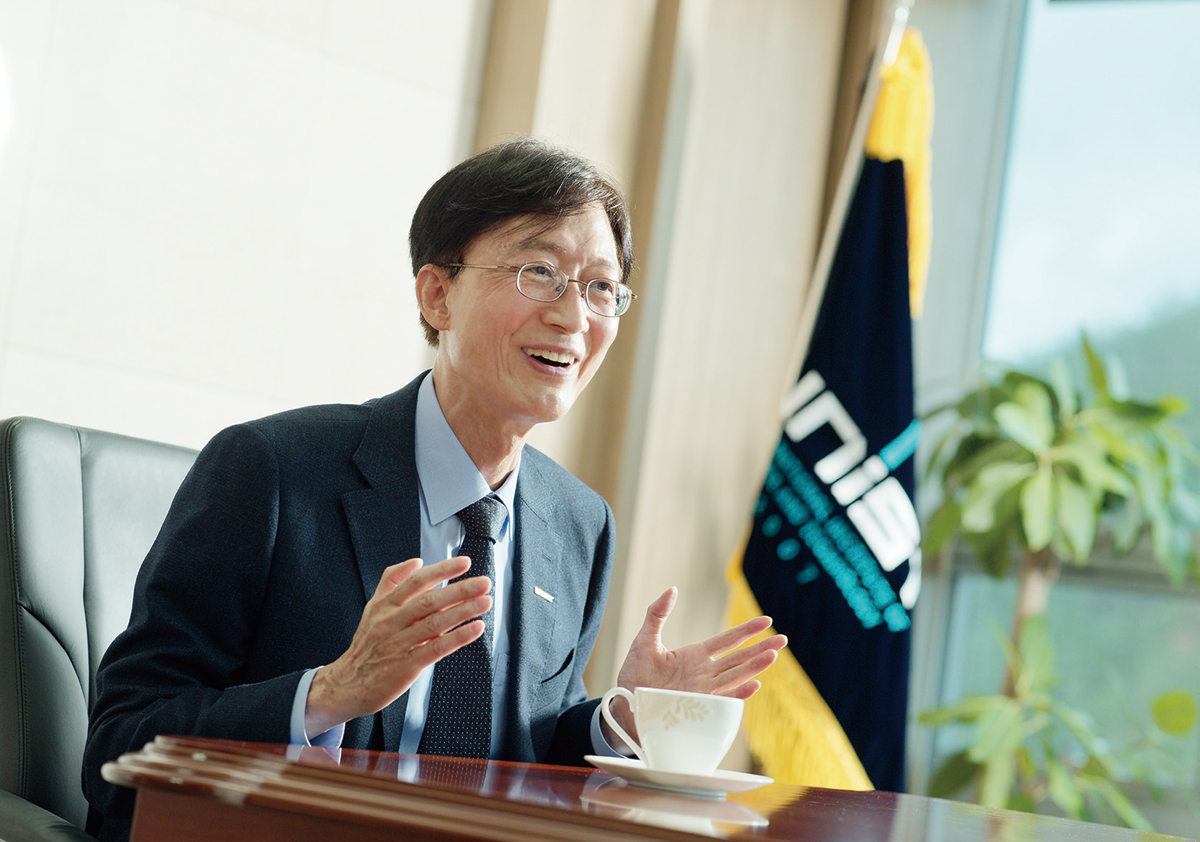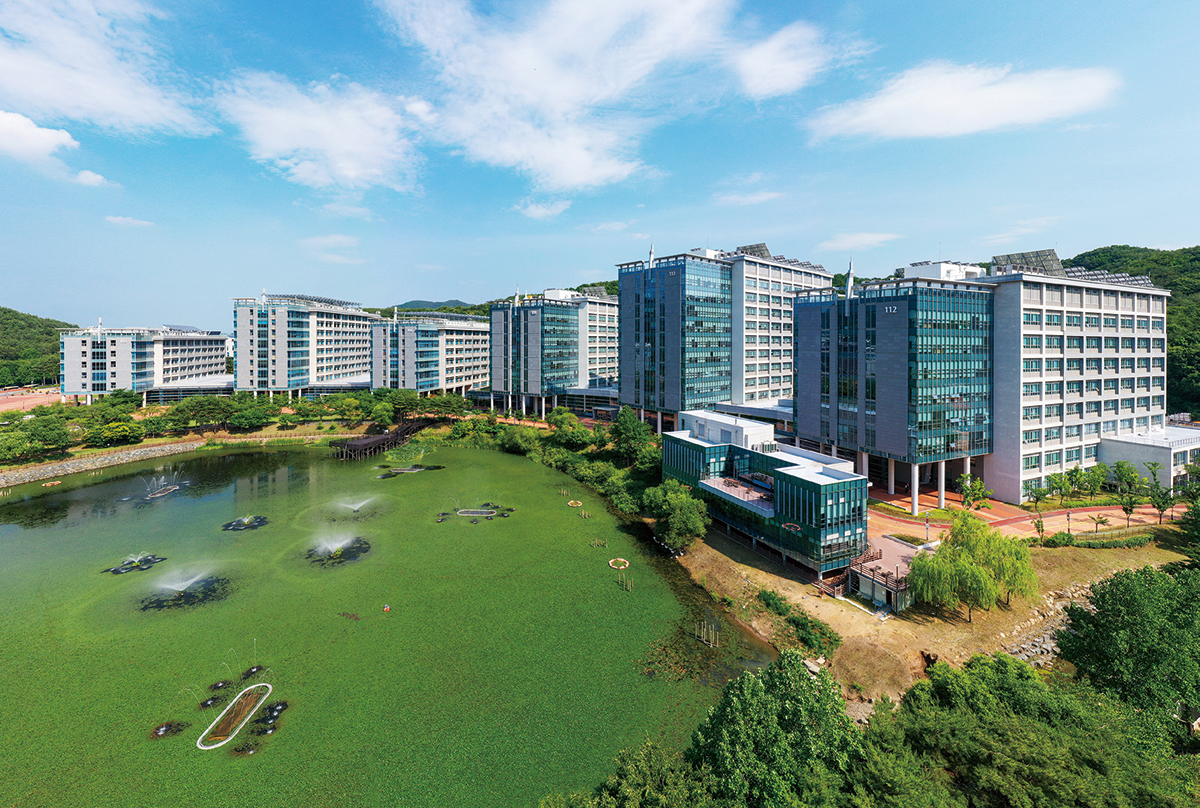
- ISSUE
- Let’s build a world-class research-oriented university
that will change the future of Ulsan!
본문영역
Let’s build a world-class research-oriented university
that will change the future of Ulsan!
- Written by UNIST President Lee Yong-hoon

We had two bits of good news at the end of last year. The first was that ten UNIST professors had been selected for the ‘List of Highly Cited Researches (HCR) in the Top 1%’ announced by Clarivate, a global information analysis company. Three more people than the previous year were chosen this time around, with the result that UNIST ranked No. 1 in Korea. Considering the size of the university, the fact that 10 out of 60 HCRs in Korea belong to UNIST is an amazing achievement. And the second bit of news was that UNIST’s startup company, Recens Medical, had won the US$5 million Export Tower Award. Recens Medical has proven the excellence of its rapid-cooling medical device, which it succeeded in developing by itself within just five years of its establishment.
As the president of UNIST, I couldn’t hide my joy. Indeed I was over the moon because both extremes, which have been focused on making UNIST a research-oriented university, have been successful. UNIST aims both to win the Nobel Prize in Basic Research and to produce companies like Google through industry-academia innovation.
UNIST dreams of becoming a research-oriented university that will change the future of Ulsan. A world-class university can change the future of a city, a region, and even a country. The history of Silicon Valley speaks for itself. Behind the birth of Silicon Valley, the world’s leading source of global innovation, lay a powerful research-oriented university equipped with world-class researchers.
At the end of the nineteenth century, when Stanford University was founded, the western states in America were like an empty field. Competent young graduates of Standford University, which was established with the aim of becoming a prestigious university in the west, normally headed east to find a job at that time.
It was Frederick Terman who changed all this. Appointed to Stanford University in 1925, Terman was an excellent researcher as well as an innovator who emphasized the university’s need for entrepreneurship. While serving as the dean of the school of engineering and provost at Stanford University, Terman established an industrial-academia cooperation complex at the university, which was surrounded by apple trees at that time, and emphasized the importance of business start-ups. Against this background, HP Inc., which was founded in 1939 by two Stanford graduates, Hewlett and Packard, is considered the starting point of Silicon Valley. That’s why Terman is nicknamed the “father of Silicon Valley”.
There is another person who should be credited for the establishment of Silicon Valley, namely, William Shockley, who won the Nobel Prize in Physics. Shockley suggested the concept of a new transistor and opened the door to the semiconductor industry. Raised in California, Shockley gained a reputation after winning the Nobel Prize in Physics in 1957 for research he conducted at Bell Laps in the east. After Terman’s innovation, Shockley opened a research institute near Stanford University and assembled personnel for research on semiconductors. Many talented people from Caltech, Stanford University, and MIT came to the research institute, went on to found Fairchild Semiconductor, and then established many leading semiconductor companies including Intel, thus creating the legend of Silicon Valley.
UNIST, which was created with the high aspirations of Ulsan’s citizens, has gone through tremendous advances since its foundation, thanks to the full support of Ulsan City and Ulju County. With the vision of becoming a world-class research-oriented university, the UCRF (UNIST Central Research Facilities), which is equipped with the very best facilities, has recruited many excellent researchers. Gamakgol, which was originally just an empty field, today, now has some 300 world-class professors and about 5,000 students and researchers.
A research-oriented university is a magnet for talented people. Outstanding domestic and foreign researchers and students come to Ulsan to join UNIST. Every year, some 200 institutions use the UCRF’s equipment to receive the results of around 6,000 analyses. And more than 110 companies come to the UNIST AI Innovation Park to take part in artificial intelligence innovation.
UNIST’s researchers are like Terman and Shockley. Professor Kim Geon-ho leads Recens Medical, winner of the US$5 million Export Tower Award. Professor Cho Jae-pil has established a secondary battery material company in Ulju County and attracted more than KRW 100 billion in investment. Biotechnology research, including genome research, has allowed Ulsan’s bio industry to flourish, while the UNIST Graduate School of Semiconductor Materials and Devices Engineering, which opened last year, is raising the possibility of a new industry in Ulsan, previously a barren field for semiconductors.
UNIST’s dream is to make Ulsan a melting pot of innovation like Silicon Valley. As such, UNIST must play a key role in achieving Ulsan’s dream of taking a giant leap towards becoming a global center of innovation, reaching beyond the glory of being an industrial capital. To this end, UNIST must continuously secure the best faculty, especially those studying new areas. If we fail to scale up and bring in excellent young professors, our university will lose its dynamism. We cannot delay in securing state-of-the-art equipment because we cannot lead the future with old or obsolete equipment. We must attract bold investments with the idea of establishing the second UCRF.
- the UCRF (UNIST Central Research Facilities), which is equipped with the very best facilities, has recruited many excellent researchers. Gamakgol, which was originally just an empty field, today, now has some 300 world-class professors and about 5,000 students and researchers.
-

So let’s dream together of a future when Ulsan will represent the world! We are already getting closer to our dream. I look forward to hearing the news that we are one step closer to realizing our dream in 2023.
-

-
“By 2027, UNIST will leap forward to become one of the world’s top 100 research-oriented universities!”
This year, UNIST entered the top 100 universities of the international rankings (THE No. 174, QS No. 197), and settled in the top ranks (No. 5, No. 6) among domestic universities. Besides, UNIST has been ranked No. 11 worldwide and No. 1 nationwide according to the 2022 THE Young University Rankings. UNIST’s preparations and challenges for becoming a “Global Top 100” are as follows.
-
"Inculcating a culture of First Mover DNA!"
-
• Endeavor to secure “global innovation DNA” in all areas including research, education, and international cooperation.
• International Advisory Committee under direct presidential control: Composed of and operated by erudite scholars of Nobel Prize winning or equivalent status, and presidents of the world’s best universities.
• Reinforce the global cooperative network: Enhance UNIST’s global status by expanding direct exchanges with the world’s top 100 universities.
• Improve global research competitiveness: Promoting research with a strong international impact, such as improving the paper citation count index.
• Expand international joint research and overseas dispatch programs, advance the research support system, and attract excellent faculty and students, etc.
-
Promotion of the global start-up support system
-
• The domestic start-up infrastructure is concentrated in the capital area, making it difficult for UNIST start-ups to use it.
• Promote the establishment of a global platform for companies that have started up at UNIST to directly enter the US market
: “Now, companies that start up in the provinces do not have to go through Seoul to enter overseas markets, unlike in the past.”• Establish a network with venture capitals or start-up incubators in major cities such as San Diego and Chicago, USA
• “In this way, we can grow to a level where we can directly cooperate with world-class universities, institutions, and companies.”
:“If we expand our network and the scope of our cooperation internationally, our research and innovation capabilities will grow as well.”• Provide opportunities for innovative companies in Ulsan, in connection with UNIST, to grow together on a global platform.
-
‘UNIST Challenge Convergence Building ... A Cradle for Nurturing Global Practical Talents
-
• The Challenge Convergence Hall consists of classrooms, practice rooms, and a start-up support office that are required to foster ‘UNIST-style Practical Talents’
• Construction of the hall (seven floors including one underground floor) began in January 2023 and is scheduled for completion by the end of 2026, at a cost of KRW 45 billion.
• The construction work will be funded by adding government grants to the KRW 30 billion donated as a development fund by Chairman Lee Jun-ho of DS Holdings in November 2021.
• The construction work will be funded by adding government grants to the KRW 30 billion donated as a development fund by Chairman Lee Jun-ho of DS Holdings in November 2021.
Talents who can
Exploring Fun > Challenging Freely > Equipped with Problem Solving Skills > Creative & Innovative Talents

